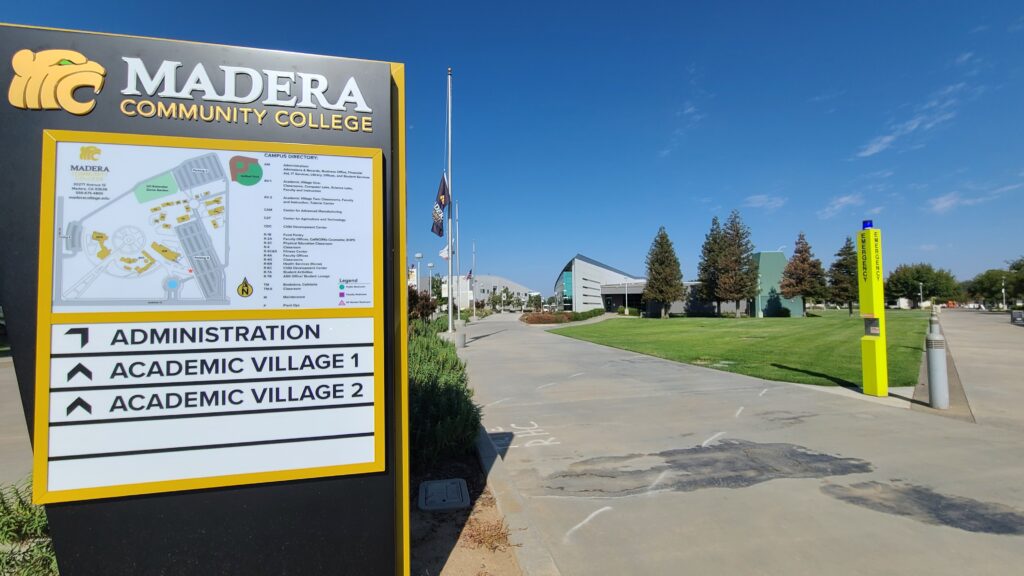
Jessie Ryan, president of the Campaign for College Opportunity
Courtesy of the Campaign for College Opportunity
One of California’s top higher education advocacy groups, the Campaign for College Opportunity, has a new leader.
Jessie Ryan, who took over as president of the organization on July 1, has worked at the campaign for 19 years, most recently as an executive vice president.
Under Ryan’s predecessor, Michele Siqueiros, the campaign sponsored legislation making it easier for community college students to skip remedial math and English classes and enroll immediately in transfer-level courses. The organization has also advocated for reforming the state’s financial aid program and backed legislation intended to make it easier for students to transfer from a community college to a four-year university.
Ryan, who is a product of the Los Rios Community College District and San Francisco State University, recently spoke with EdSource about her priorities and how she plans to build on the campaign’s work around remedial education, improving transfer and expanding financial aid, among other topics.
The following conversation has been edited for clarity and length.
What are your main priorities as the campaign’s new president?
I’d love to share with you a little bit about my journey because I think it connects to my priorities as well.
I was raised by a single mother who always dreamed of going to college, and she did not succeed in reaching her college dream. We moved around a lot and struggled with homelessness and food insecurity. She really instilled in me from the time I was 4 or 5 years old that a college education was going to be my pathway out of poverty.
When I went to a community college, I had no clue as to how to access financial aid, how to develop an education plan so that I could transfer — all of these key things that would be building blocks to lifetime success. And just by luck, I ended up finding a counselor who really changed my life. Because of her, instead of going into remedial math, I had access to statistics. Because of her, I got an education plan to transfer and worked 35 hours a week and went to three campuses simultaneously to transfer.
When I did transfer, my mother became homeless again, and I was faced with this question of, do I drop out? And I did not have an associate’s degree to show for my work because the requirements to transfer did not align with the requirements to get an associate’s degree.
And years later, I would find out that these were the experiences of millions of community college students across the state. Students being put into remedial sequences from which they could never recover based on one high-stakes test. Or having to repeat coursework because the requirements to transfer didn’t align with the requirements to get an associate degree, and sometimes dropping out and having nothing to show for their work.
Those have been two of the bedrock policies that we have worked on at the campaign over the years, alongside a host of other issues. The campaign is going to continue to be at the forefront of policy transformation.
The Campaign for College Opportunity previously sponsored Assembly Bill 705 and co-sponsored Assembly Bill 1705, bills meant to make it easier for community college students to skip remedial math and English classes and access transfer-level coursework right away. How do you assess the implementation of those bills, and do you expect there could be additional legislation?
We are not currently looking at additional legislation, but I wouldn’t say it is off the table, should it be necessary moving forward. AB 705 was one of most significant equity levers in ensuring that students are completing college-level math and English, accessing college-level math and English. There is significant data that has supported why this reform was necessary. But despite that, what we have marveled at is the level of continued opposition.
We’ve been really lucky to have, through former (California Community Colleges) Chancellor Eloy Oakley and now Chancellor Sonya Christian, champions who are committed to this issue. But it has been a fight year after year, more recently with the pandemic. A lot of people want to say that because of the pandemic, students are less prepared than ever before. And yet what we have seen from the most recent data is that students who access transfer-level math and English have done as well as in the prior years or even slightly better.
I think that the next iteration of this work is going to be, how do we implement equitable access to college-level math and English for our STEM (science, technology, engineering and math) students and for our ESL (English as a second language) students? Because those are the last two pieces of 705 and 1705 that need to be addressed and built out. The chancellor’s office is already talking with us at the campaign about helping to guide what the successful ESL implementation would look like for our multilingual learners.
Where I think there’s potential for additional legislation and potential for additional budget investment is around co-requisite. Students who take co-requisite courses alongside transfer-level math and English succeed at higher rates. And so I think where we are is, how do we analyze evidence-based high quality co-requisite and resource it at scale? Because then it allows us to celebrate not just a 100% access to transfer-level math and English, but stronger throughput, stronger completion rates.
Last year, Gov. Gavin Newsom signed AB 1291 to create a pilot program in which students seeking to transfer to UCLA will get priority admission if they complete an associate degree for transfer starting in 2026-27. The campaign at the time said it appreciated the legislation but called it only a first step. Do you have plans to try to further improve transfer to the University of California?
We have over the years struggled with the reality that UC, while they’ve made some significant progress in meeting the needs of transfer students, can and should do more. They have had transfer admission guarantees, but they’re not at all campuses. And for community college students who are trying to prepare, they want to be able to use the associate degree for transfer, not just for admissions consideration, but for an admissions guarantee, if not to the campus of choice, to the system at large.
With 1291, the original bill was not a pilot. But it was amended to a pilot in the final stages of the legislative cycle. It is a first step. I appreciate that it’s a first step and that UCLA would be an important campus.
But at the end of the day, that pilot should be used to take the associate degree for transfer to scale. It should not live in isolation. How do we make sure that with UCLA’s new leadership, this is prioritized in such a way that sets it up for success and applicability for other campuses across the state? I hope that that will be the case.
Lawmakers and advocacy groups for years have said they want to reform the Cal Grant to make it simpler and make more students eligible for aid, but it hasn’t happened yet because of the state’s fiscal woes. Is Cal Grant reform still a goal of the campaign?
We’ve been in touch, me and the new head of the California Student Aid Commission, Daisy Gonzales. She brought together a small group of partners to talk about how we can begin looking ahead to do what we need to so that we don’t find ourselves in this position again. Recognizing that there’s not going to be the kind of funding we need to actualize the Cal Grant Equity Framework this year, how do we start thinking about alternative funding sources and a multi-year approach that might allow us to take on pieces of the Cal Grant Equity Framework until we get to a place of full funding?
What kinds of alternate funding have been discussed?
We’re very early in conversations about alternative funding sources, but right now I’m encouraged because Daisy and the California Student Aid Commission are saying we need to think big. Is there the possibility of going after new dollars? Could we even be talking about seeing if there could be a tax that would be able to fund the kind of financial aid that would drastically expand access for students across the state?
But they’re early conversations. Nothing is moving yet. What I will say, though, is, for me, having done this work for nearly 20 years, sometimes the greatest innovation comes at a moment of desperation. Or a moment of budget malaise. And so instead of just standing on the sidelines, I really think there is power in folks in the education equity community, our higher ed institutional partners and our Student Aid Commission saying, ‘Here are the suite of options that we’re looking at,’ recognizing that this is going to take a few years to be able to see into fruition.
Do you have any specific goals or priorities related to the California State University system?
At the CSU system, we are seeing that there have been some really strong practices adopted around inclusive hiring, cluster hiring to ensure that faculty and leadership reflect the diversity of the state. There has been some really good work that has happened to support Black learner excellence and innovation. I would say an example of that right now is what we’re seeing with Sac State developing the first Black Honors College in the nation and what is going to be the house to a dedicated $2 million fund to support Black learner success systemwide. We want to really work with the system and accelerate those efforts because I think the challenge here is we know that some campuses have done well and others have not. And really the key to equity moving forward is going to be to ensure that all CSU campuses offer the same type of quality experience for our Black and Latinx students that some leaders on campuses are prioritizing. I think it becomes even more important that we elevate those high-impact practices like cluster hiring and dedicating funding to ensure welcoming campuses right now than ever before, because students and families are questioning the value of college.
In response to the Supreme Court ban on race-conscious admissions, California people have said, ‘Well, we’ve had Proposition 209 for quite some time. So does this really affect us?’ But the reality is we have seen that there is a chilling effect often after these types of decisions. Students and families are questioning the value of college. Students and families are wondering whether or not college is affordable, accessible, worth enrolling in at this time. And so I do believe that given the size, the significance of the CSU system, we have a huge opportunity to say we’re going to do more than ever before in the Graduation Initiative, to make sure that those gains are actually resulting in not just real number gains for all student populations and racial and ethnic subgroups, but closing of equity gaps.


